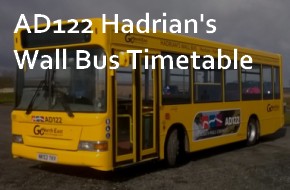
Roman Temples Project Blog
Find out what is happening at the Roman Temples dig by following the blog provided by Professor Ian Haynes and Tony Wilmott.
About the authors
 Professor Ian Haynes has excavated extensively in Britain, Germany and Romania. He is a specialist in the archaeology of the Roman Empire and has considerable experience of investigating religious sites. Ian is Professor of Archaeology at Newcastle University, having previously worked for London and Oxford universities. He is also co-director of a major archaeological research project under St John Lateran (the Pope's Cathedral) in Rome.
Professor Ian Haynes has excavated extensively in Britain, Germany and Romania. He is a specialist in the archaeology of the Roman Empire and has considerable experience of investigating religious sites. Ian is Professor of Archaeology at Newcastle University, having previously worked for London and Oxford universities. He is also co-director of a major archaeological research project under St John Lateran (the Pope's Cathedral) in Rome.
.jpg) Tony Wilmott is one of the leading authorities on Hadrian's Wall and the amphitheatres of Roman Britain. Specialising in the Roman and Medieval periods, his excavations include Birdoswald, Chester, and Richborough. Tony is a member of the Institute for Archaeologists and Fellow of the Society of Antiquaries. Currently senior archaeologist for English Heritage, and the Current Archaeology Awards Archaeologist of the Year in 2012.
Tony Wilmott is one of the leading authorities on Hadrian's Wall and the amphitheatres of Roman Britain. Specialising in the Roman and Medieval periods, his excavations include Birdoswald, Chester, and Richborough. Tony is a member of the Institute for Archaeologists and Fellow of the Society of Antiquaries. Currently senior archaeologist for English Heritage, and the Current Archaeology Awards Archaeologist of the Year in 2012.
Monday 10th June 2013
Professor Ian Haynes
This is the public start of the excavation, the day of the first site visits, but no less importantly it is the day when our first cycle of undergraduate students (all attending for three weeks) and our volunteers arrive. All new arrivals do the same induction, and thus have to endure a monologue from me on the project’s research agenda (exciting, the agenda at least, if not the delivery) and the merits of Single Context Planning (important, but initially inclined to dampen the enthusiasm of those who thought they were ‘just here to dig’). Survey training then follows before we take people up on to the site. No one is under any delusions that all this information will go in first time, but the training programme here is designed so that we intersperse the theory with repeated practice and then application on site. The site supervisors (Dan Garner and David Maron), community archaeologist (Hannah Flint) and a core of experienced excavators are there to guide people through it all.
Once on site everyone receives a health and safety briefing followed by site preparation work. The teams are divided, one taking training in environmental archaeology and flotting, the other cleaning up the surfaces in the trenches. The combination ensures that we keep up momentum. By the end of the day work has advanced sufficiently far in trench E to allow us to identify the outlines of the rectangular ‘temple’ identified by Joseph Robinson in 1880. I think we will soon be able to remove the quotation marks there – we have to approach the antiquarian account of the building’s discovery critically, but the layout already looks very temple like. It isn’t just the fine apse at the southern end that strikes one, but as Tony has noted, the two quasi-circular features which look very much as though they once supported columns at the northern end of the building. The overall layout looks very much like a temple with columns in antis, the arrangement whereby the columns screening a temple entrance are flanked by walls. But this may be a little premature, it is important to keep floating hypotheses and to weigh the evidence for and against them, as the excavation continues. Becoming too fixed on one interpretation too early can blind the excavator to other possibilities, at the same time, failing to grasp the character of a site or building may mean that insights gleaned from similar structures elsewhere are not weighed alongside the evidence.
No less important for us is the area opened outside the building. Robinson disturbed some of this area with his diggings too, writing of its complexity and of the presence of burials – indicating a later phase of activity perhaps, and that alone suggests that it has an important tale to tell. But if the structures here do prove to be linked to cult practice, as we strongly suspect, there is abundant evidence in the Roman world for such practice leaving traces outside the buildings too. We need to take a holistic approach to the site. Whatever is going on here, it is important to note that this area, immediately to the south of the rectangular building also yielded material directly comparable to that found in the 1870s excavations, most notably the upper part of an altar dedicated to Jupiter Optimus Maximus by C. Caballius Priscus. Three other altars found by Caballius Priscus were found in the Maryport pits in 1870. Will trench E take us closer to where the whole lot were once displayed?
For previous blogs from the Roman Temples Project click on the links below:


.gif)



 button to add an item to your Itinerary basket.
button to add an item to your Itinerary basket.
